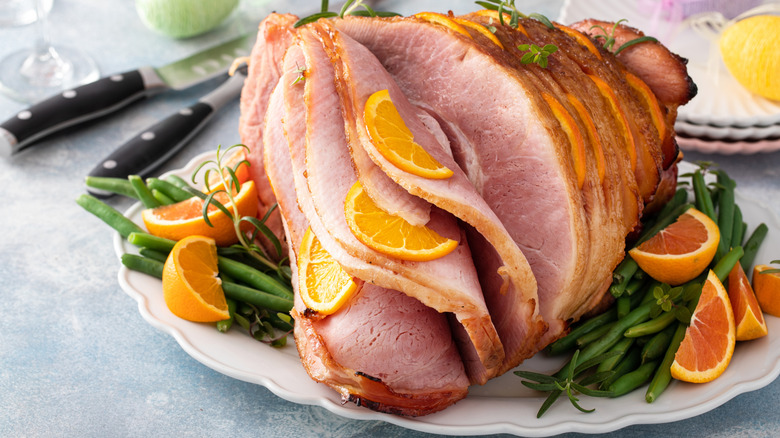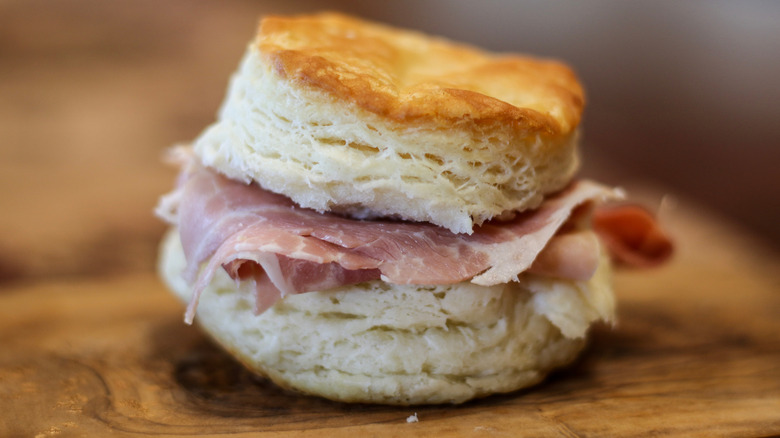How To Know Which Cut Of Ham To Buy At The Store
When you think of ham, what comes to mind? Is it the sweet-glazed Easter kind, or the thin-sliced deli stuff found in sandwiches? According to Chris Mattera, culinary innovator at North Country Smokehouse, there might be a wider variety of types of ham than you realized. To know what type of ham to buy, it's important to be able to tell them apart, and luckily Mattera could help us with that.
He tells us that both glazed spiral-sliced and deli-sliced ham fall under the category of city ham. "City Ham is a wet-cured ham that has been processed with a brine ... to season and preserve it. Brining also impacts texture, yielding a tender product," said Mattera. The difference between city ham and country ham is that the latter is dry cured, a process he says "concentrat[es] the flavor and preserv[es] the meat ... While it can be very tender, country ham tends to be tougher than city ham due to the drying process." (It can also be very long-lasting — the world's oldest ham dates to 1902.) There's also fresh ham, which is raw and unsalted, and uncured ham, which is preserved using vegetable extracts instead of nitrates, so it lacks the pink color.
Ham can also come with or without a bone, or even semi-boneless. As Mattera explains, "Semi-boneless ham may have had the hip and femur bones removed, but has the shank bone intact, which can be used as a handle to hold the ham while carving, or it may have had the hip and shank bones removed but still have the femur intact to hold slices together if it has been spiral sliced."
What types of ham are best for different recipes?
Now we know how to tell hams apart, but which kind should we be buying? According to Chris Mattera, "Much depends on the final product that you are going for." In the South, country ham is traditionally accompanied by biscuits, and Mattera explains, "The strong salty flavor ... will stand up to the mild and sweet butteriness of the biscuit." For an omelet, however, city ham is the best pick. "Its softer texture and milder flavor ... wouldn't outshine the other fillings or slip out of the finished omelet." He also feels that city ham is best for sandwiches: "The ability to 'sing in harmony' with a lot of other flavors is as important as the tenderness required to be bitten through without flopping out of the bread and ruining your shirt."
As for the bone or no bone issue, Mattera stated: "Whole or half bone in hams are the right choice for impressive centerpieces on special occasions. I routinely use a ham in place of a turkey at Thanksgiving, and always have one on the table at Easter." Boneless hams, however, can be a more versatile option. "They can easily be sliced for serving as an entree, or diced for use in soups, sauces, and omelets."
One kind of ham, however, is not on Mattera's shopping list. He admitted, "There are very few situations in which I would choose a fresh ham, at least not without first treating it in some way ... The back leg of a pig is a wondrous thing, but it requires some coaxing to really shine."

